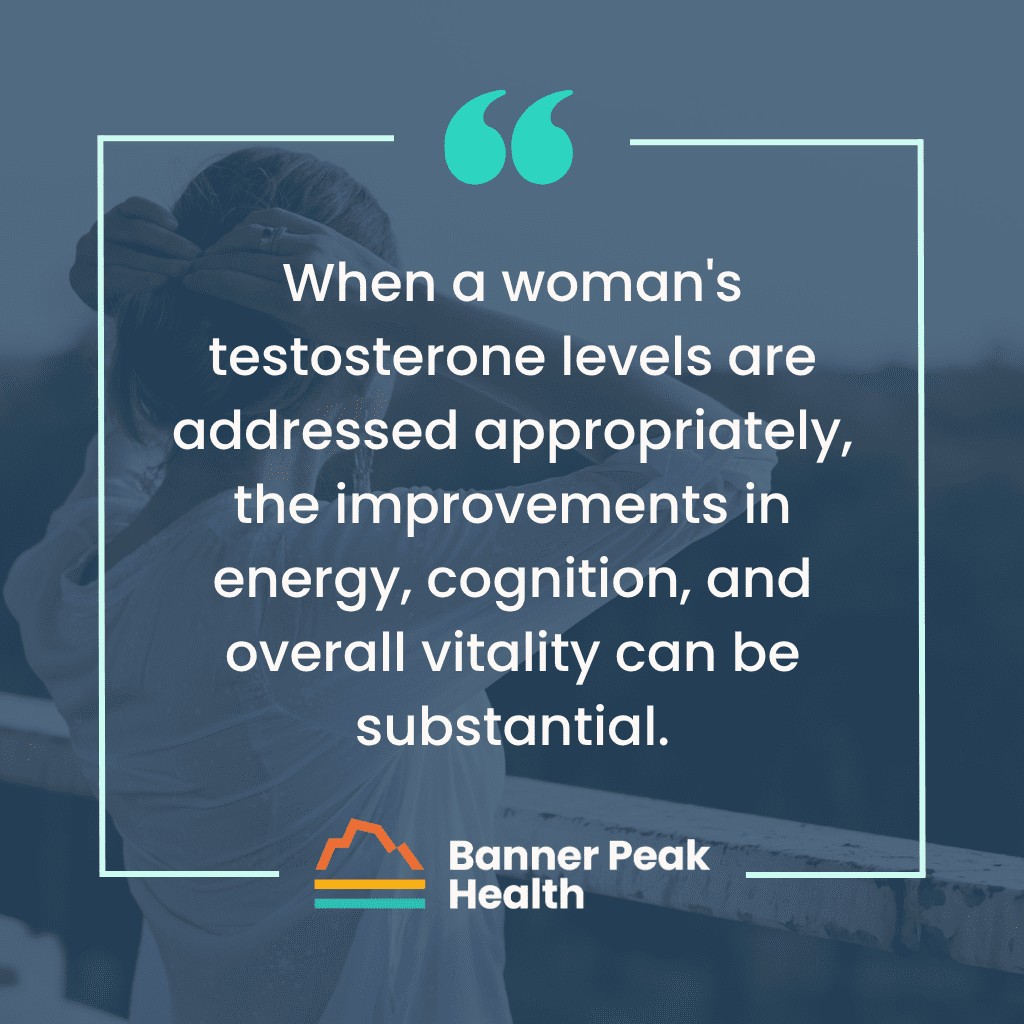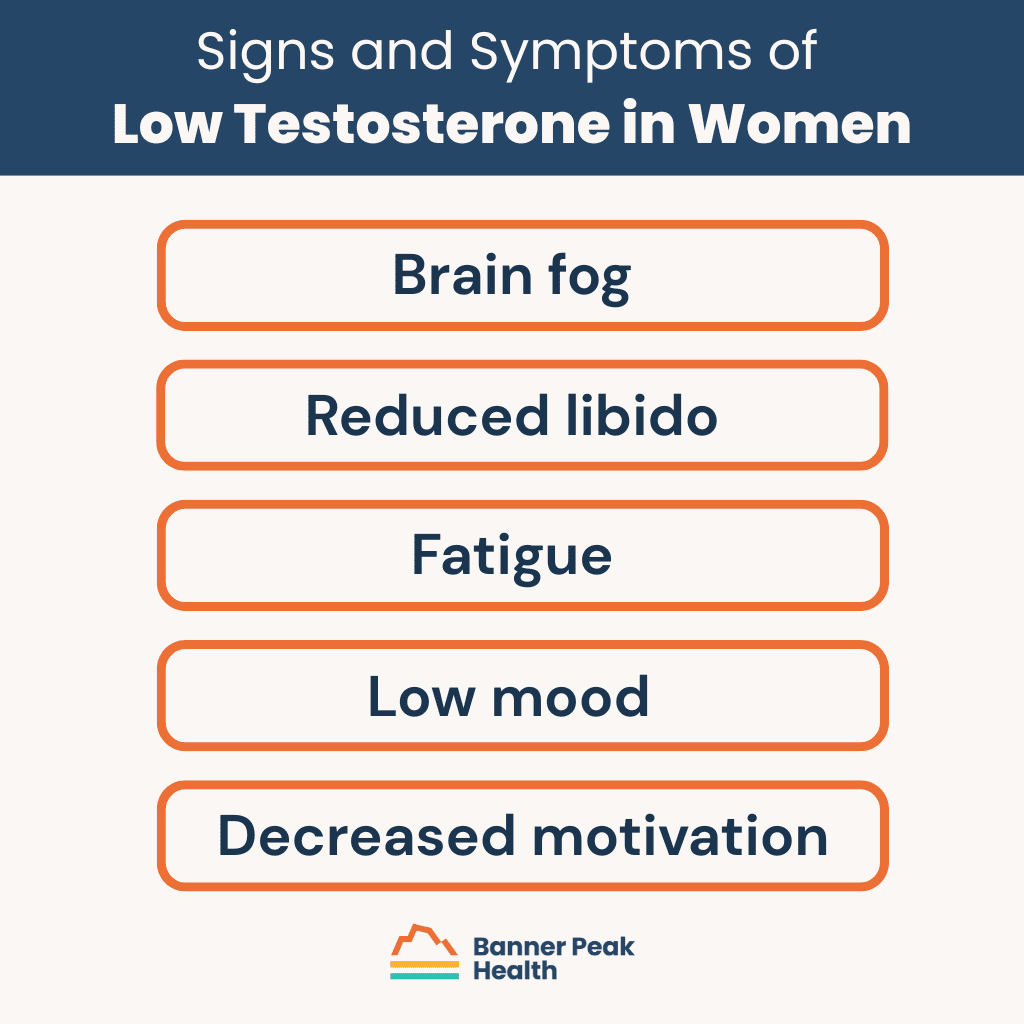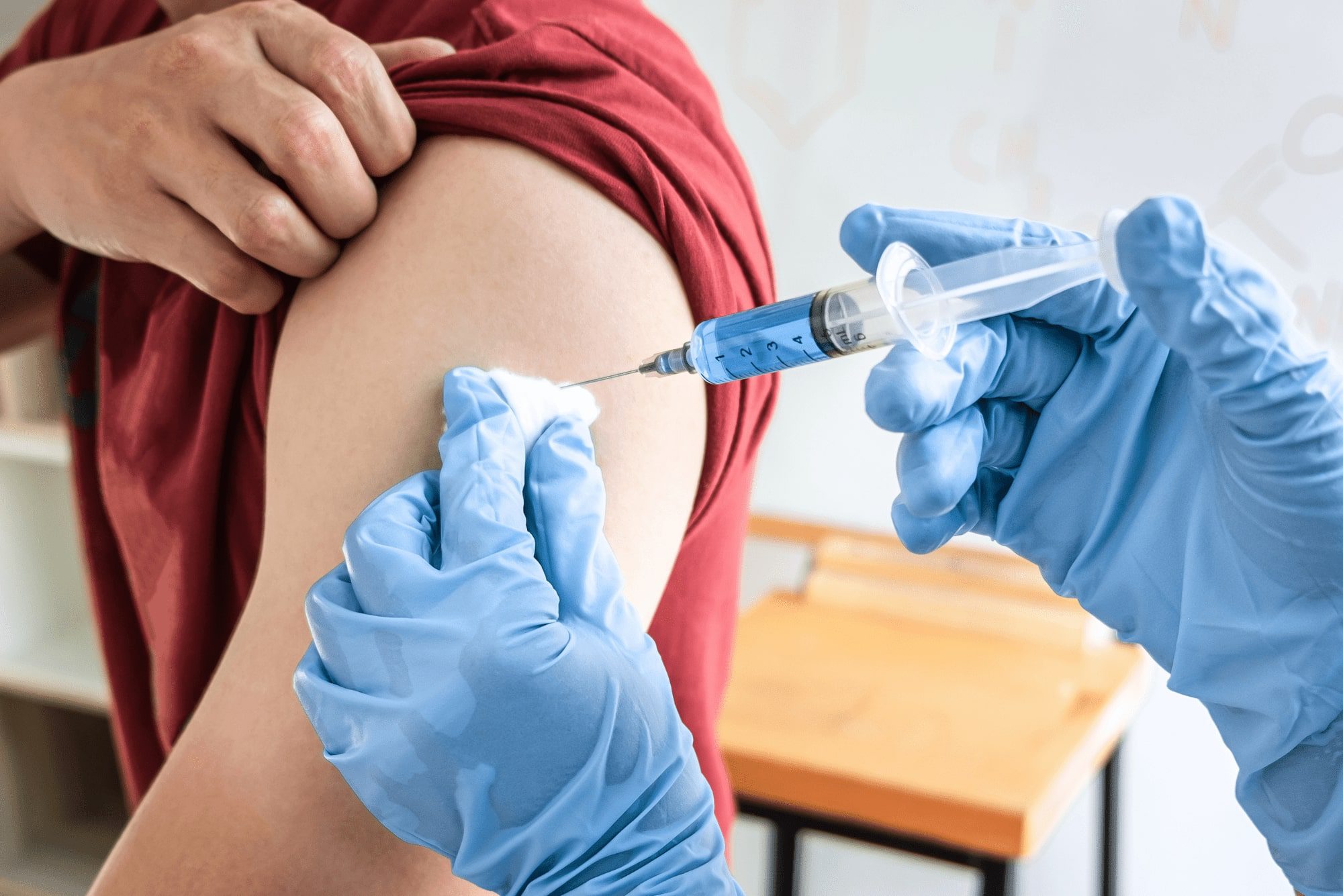When most people hear “testosterone,” they think of men. Muscles, deep voices, and masculinity come to mind.
This association is so strong that many women are surprised to learn they produce testosterone at all. Yet this hormone plays a vital role in women’s health throughout their lives.
I have a keen interest in women’s health. In my practice at Banner Peak Health, I’ve seen how addressing symptoms of low testosterone can improve a woman’s quality of life. Unfortunately, testosterone therapy remains one of the most overlooked ways to balance hormones in women.
Why do women have testosterone? What happens when levels decline, and how can we address it?
The Role of Testosterone in Women’s Health
Testosterone isn’t just about muscle mass, although it does help maintain lean tissue. This hormone supports brain function, bone health, and cardiovascular health in women.
There isn’t much data on how to treat low testosterone in women, particularly regarding dosages for perimenopausal or postmenopausal patients. The only FDA-approved use for testosterone therapy in women is hypoactive sexual desire disorder (HSDD).
Despite this limited approval, I use testosterone therapy fairly often in my practice.
Here’s a common scenario: A woman starts estrogen and progesterone for hormone therapy during perimenopause. She feels better in many ways, but still struggles with terrible brain fog. Adding testosterone often makes the difference.
This is where the art of medicine comes into play. Most of the time, women start with just estrogen and progesterone. But when symptoms persist, testosterone for women can be the missing piece.
The reason testosterone for women remains overlooked is simple: It’s off-label use. We don’t have enough research or clinical trials to guide us with the same confidence we have for other hormone therapies.
Signs and Symptoms of Low Testosterone in Women
The most common signs of low testosterone in women include:
Typically, women experience a combination of these symptoms, but the most frequent complaints are reduced libido and brain fog.
When I say “brain fog,” I’m talking about specific cognitive changes. Women describe problems with short-term recall. They feel “spacey” or “out of it.” They’re “not quite as sharp” as they used to be.
Many women attribute these changes to normal aging or poor sleep. When we dig deeper and rule out other causes, low testosterone often emerges as the culprit.
What Causes Testosterone Imbalance in Women
The primary driver of testosterone decline in women is age, not the hormonal changes associated with menopause specifically. Our testosterone levels decline gradually, and this process begins well before menopause.
The exception is surgical menopause, which leads to a much more pronounced decrease in testosterone levels. When the ovaries are removed, testosterone production drops suddenly.
Pinpointing when testosterone in women reaches a problematic level is hard because of fluctuations in estrogen, which complicates the symptoms. A woman’s estrogen might be high one week and low the next during perimenopause, making it difficult to isolate which hormone is causing which symptom.
This is why so much of hormone therapy comes down to what works for an individual patient.
Diagnosing Testosterone Deficiency in Women
If a woman recognizes these symptoms in herself, what’s the proper way to diagnose a testosterone deficiency?
Medical guidelines state we don’t need to check testosterone levels in women because there’s no reliable cutoff for what constitutes a universally low level. This gap exists because of inadequate medical research into women’s hormones.
Despite this limitation, testing can still be worthwhile. I often start with a baseline test, begin treatment at a low dose, then monitor continuously.
Testosterone for Women: Treatment Approaches
When we decide to treat low testosterone in women, I typically start with topical testosterone. I recommend a compounded formulation that comes in a device similar to a lipstick container. It uses “clicks” to dose, which makes it much more precise than other methods.
I tell patients to apply it to the back of their legs. This location helps minimize unwanted side effects.
Speaking of side effects, the most common issue I see is increased hair growth. Some women also develop acne. These effects are dose-dependent and usually manageable.
Other formulations exist, including pellets, which are hard to dose and carry additional risks. These include liver function abnormalities and potential cardiovascular disease risk, although the data here are conflicting. Pellets can also alter lipid profiles in ways we’d prefer to avoid.
Some gynecologists prescribe testosterone from a regular pharmacy for women, but in very small amounts: a pea-sized dose of gel. This approach is hard to dose accurately because it’s highly subjective.
There’s also oral testosterone for women, but I don’t recommend it. Oral forms carry lipid risks and have inconsistent absorption.
Many doctors won’t prescribe testosterone for women at all. Those who do often lack experience with optimal dosing strategies.
Today’s Takeaways
Although testosterone therapy is only approved for HSDD, it can be helpful as an adjunct to estrogen and progesterone therapy in women, especially those who are perimenopausal or postmenopausal.
If you’re experiencing brain fog, fatigue, low libido, or decreased motivation despite other hormone therapy, testosterone might be worth discussing with your doctor.
Testosterone in women deserves more attention and research. Until we have better data, treatment requires careful monitoring and a willingness to adjust based on individual response.
At Banner Peak Health, we view hormone therapy as a tool for optimizing quality of life, not just treating disease. When a woman’s testosterone levels are addressed appropriately, the improvements in energy, cognition, and overall vitality can be substantial.
Talk to your doctor about whether testosterone therapy might be right for you.


Lindsay Klein, MD
After years of feeling constrained by traditional medicine's time pressures and administrative demands, Dr. Klein joined Banner Peak Health to return to her original calling: building meaningful relationships with patients and providing truly individualized care.




